- Home
- >
- Preservation Archaeology Blog
- >
- Don’t Worry, She’ll Hold Together

(August 23, 2022)—“You hear me, baby? Hold together.” Han Solo may have been talking about the Millennium Falcon, but I recently found myself thinking that during work at 700-year-old cliff dwellings.
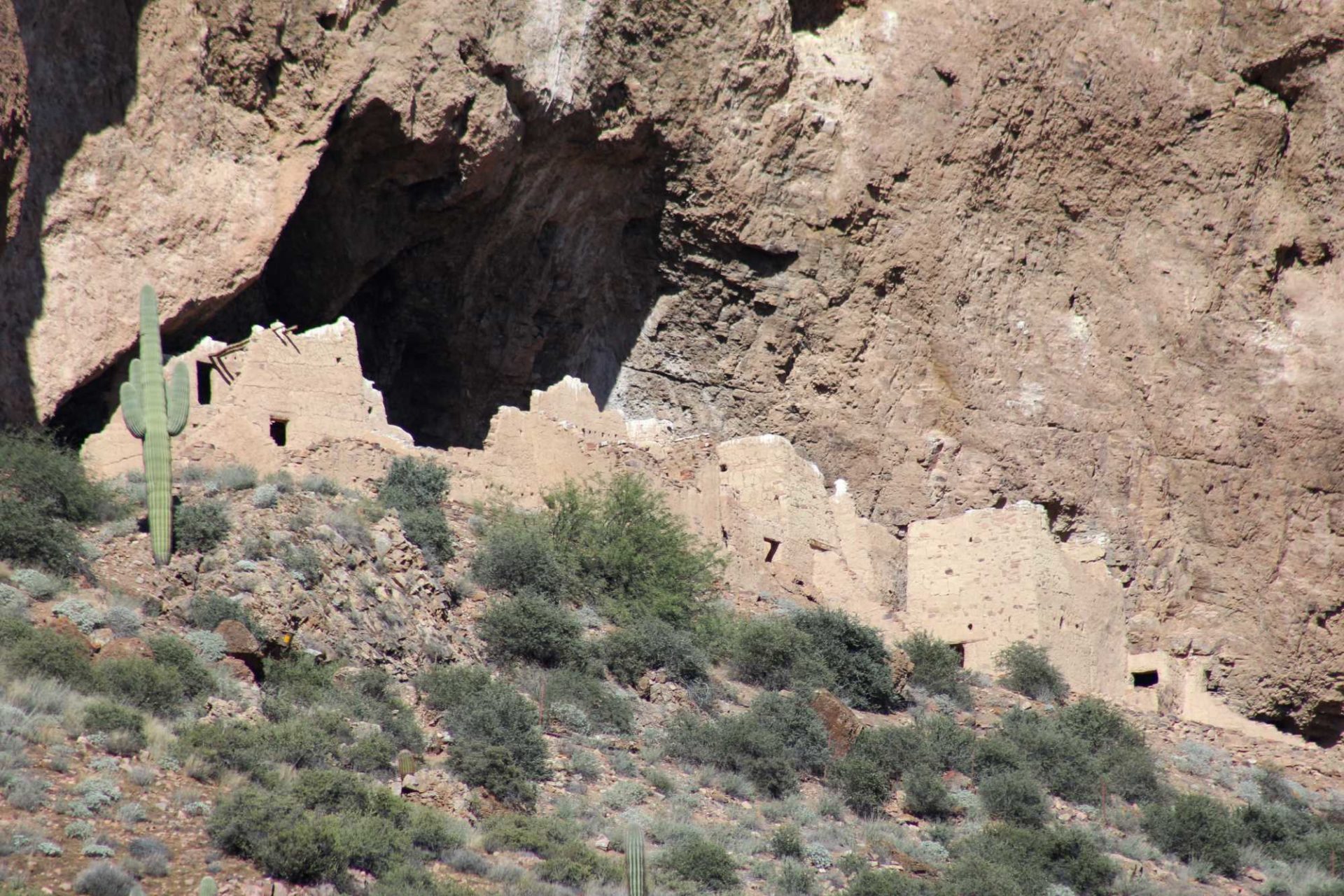
Located northeast of Phoenix, Tonto National Monument protects two cliff dwellings that provide some of the best-preserved architectural evidence related to the Salado phenomenon. Constructed using cobble and mortar architecture in about 1300 CE, and in use until about 1450, the Upper and Lower Cliff Dwellings are still mostly intact, and both even retain a few portions of their original roofs. Tonto National Monument was established in 1907, and in the 115 years since then, the National Park Service has done considerable work to maintain the integrity of the cliff dwellings.
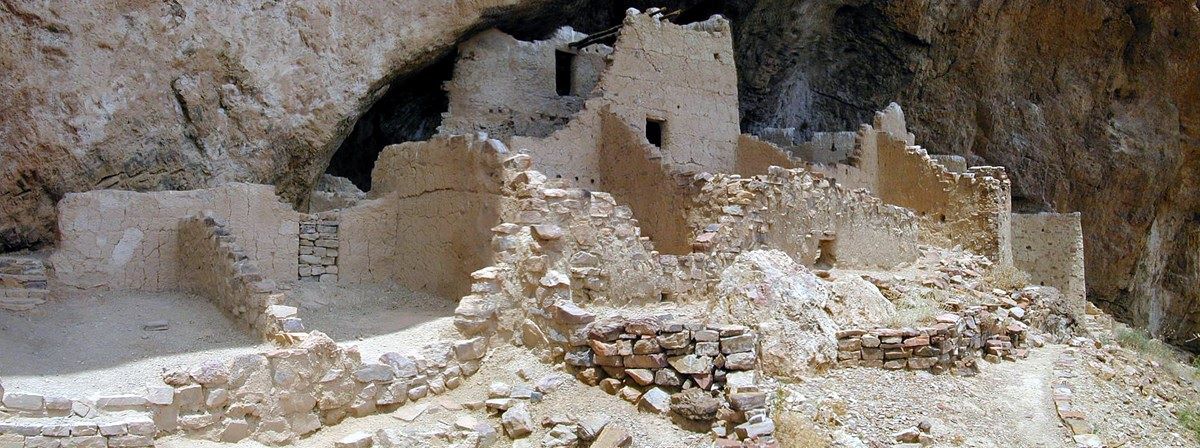
In the 1930s and ’40s, archaeologist Charlie Steen did a lot of early reconstruction and restoration work on the cliff dwellings. He reconstructed several entire walls in the two cliff dwellings and sealed many minor cracks. In 2019, park staff noticed one of Steen’s reconstructed walls was beginning to lean outward, so they constructed a large wooden brace to hold it in place. Earlier this year, the park removed that large brace, along with most of the reconstructed wall, because it turned out the brace was not in fact holding the wall up. To prevent damage to the rest of the structure, the brace had to go, and the reconstructed portion of the wall was brought down by hand, piece by piece.
While that work was going on, a second wall was noticed to be pulling away from the structure. This other wall had a large network of cracks all along the interior, and even worse, it was pulling away from the perpendicular wall behind it—there was a gap of about 8 inches behind the unstable wall. This new leaning wall is in a portion of the Upper Cliff Dwelling that receives a lot of water draining from above, and, in addition, much of the water in that area drains to the base of the leaning wall. As unstable as the wall was, the approaching monsoon could have been enough to cause a collapse.
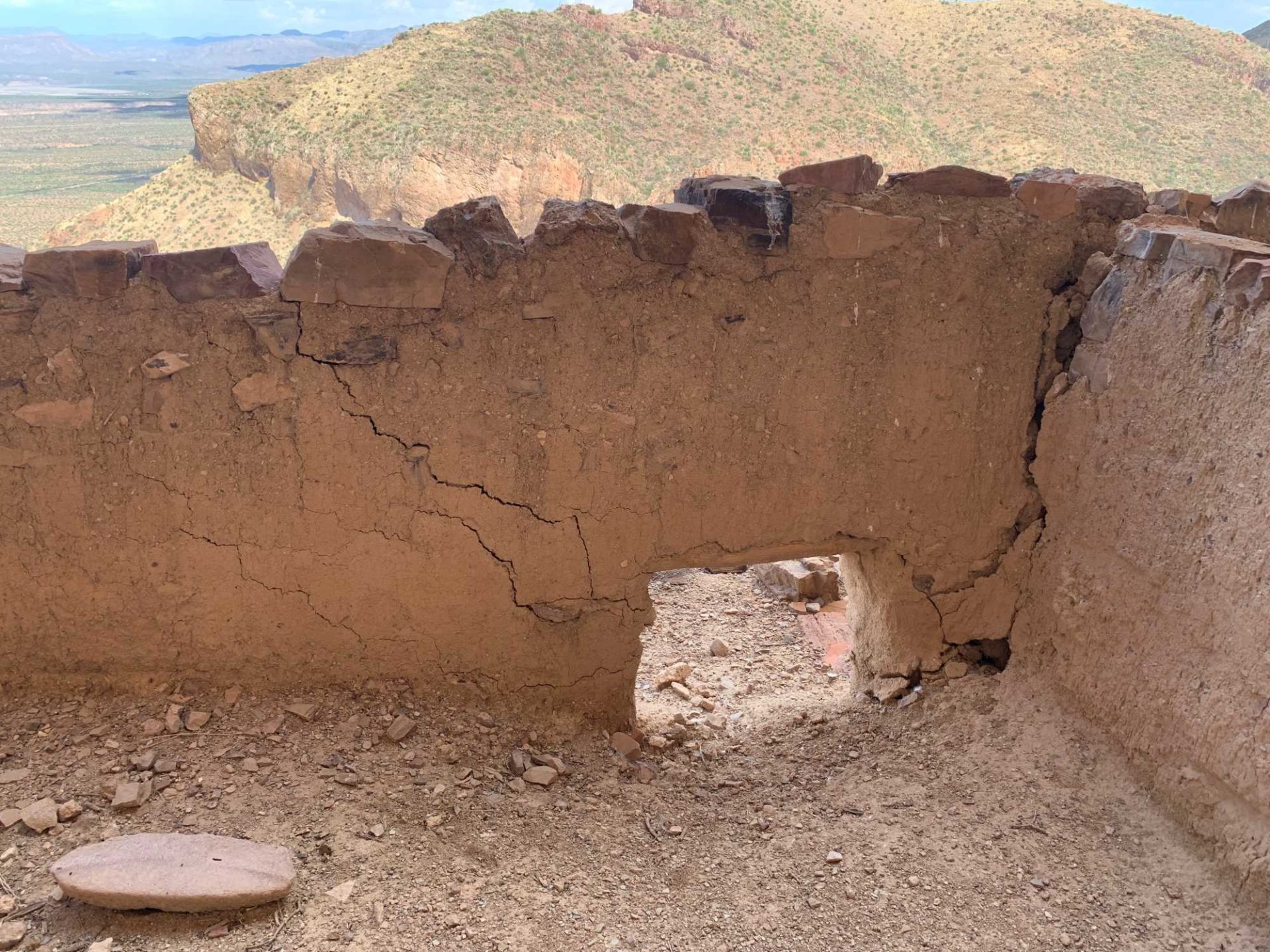
To prevent this wall from collapsing, an emergency brace had to go up, and fast!
After a couple hours of planning, replanning, and planning again, we began constructing our braces, with the assistance of park staff from Tuzigoot, Montezuma’s Castle, and the NPS Southern Arizona Office. We figured that the best way—and least damaging to the wall—would be to assemble our wooden braces away from the wall, then hold them in position while we anchored them using metal spikes, wooden blocks, and wedges.
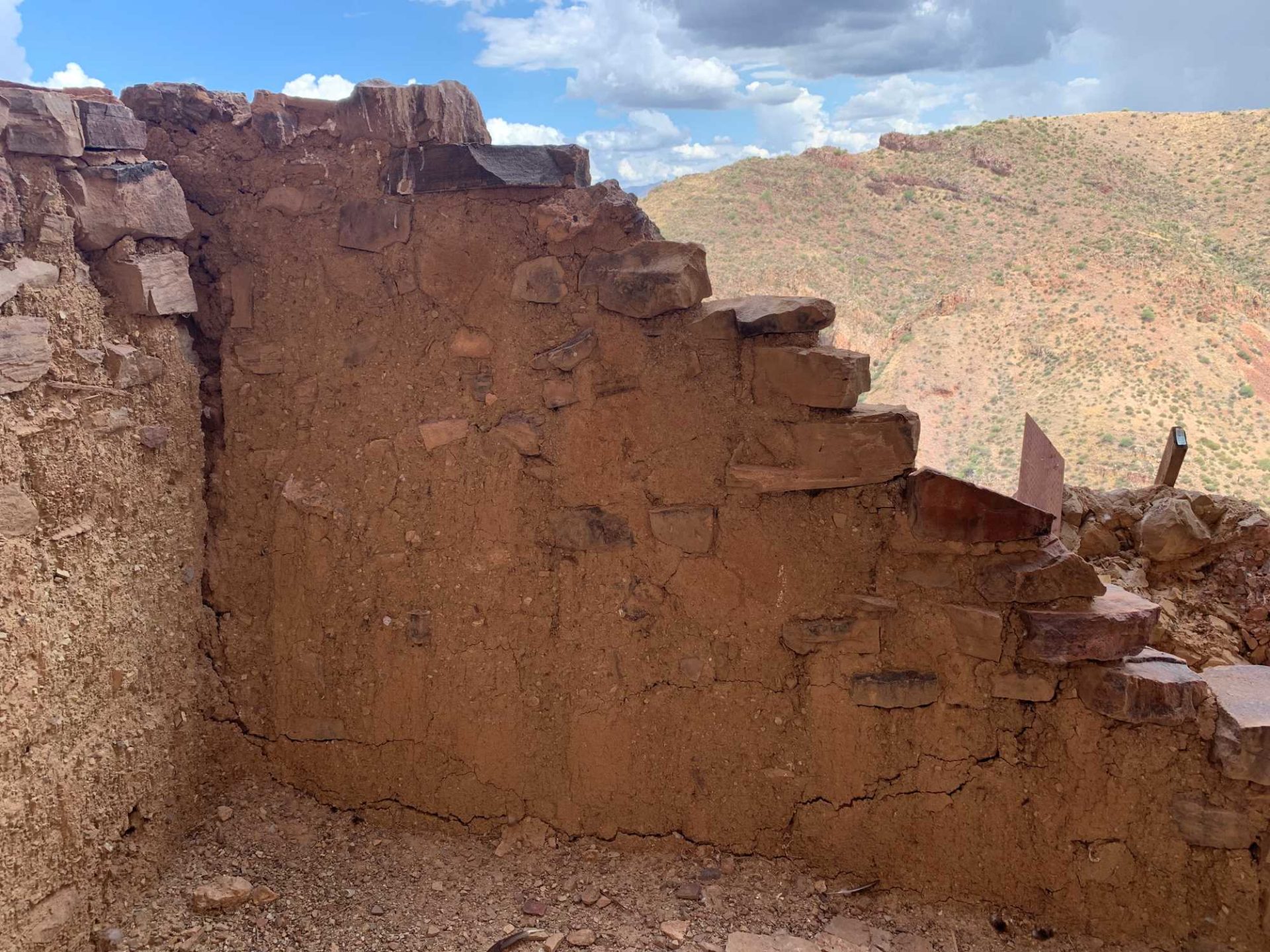
As with many things, this was somewhat easier said than done. Assembling the braces was fairly easy, but driving the metal spikes into the ground was a problem; we kept hitting rocks that we couldn’t get through! It took some doing, but eventually we were able to get the spikes in the ground, through the wooden blocks, and used the wedges to tighten the brace against the anchored blocks. On the first day, we were able to get all three braces assembled, and two put in position. We ultimately ran out of time that first day and had to come back again.
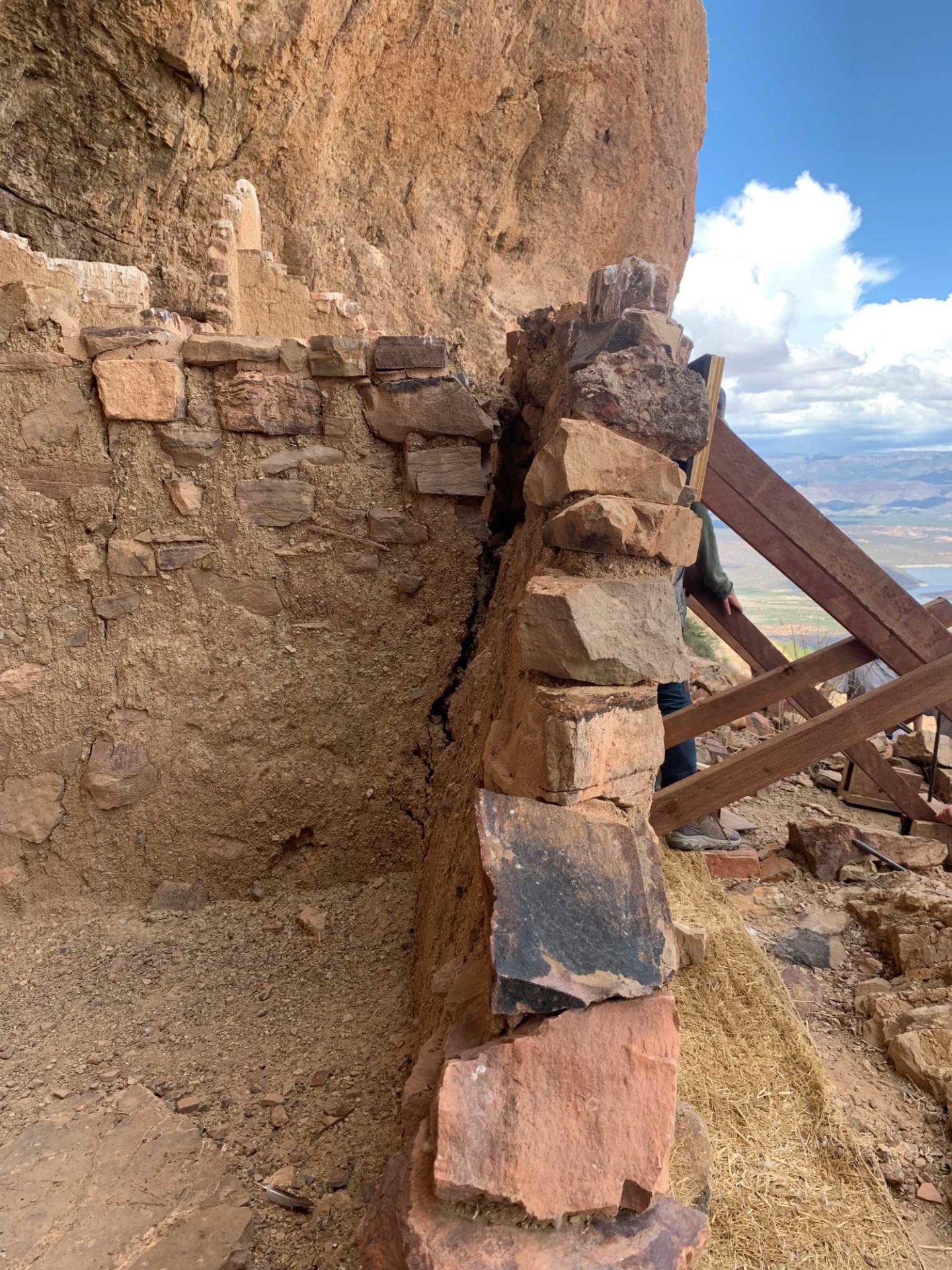
To add to the challenge, the extra park staff who came to help could only do so for the first day! This meant that the rest of the work would fall on me, the monument’s Resource Manager, Jade, and Natural Resources Intern Michael. On top of that, we could not return to the cliff dwelling until two days later, and monsoons were threatening to drop heavy rain on the park before we could complete the braces. This is when I kept thinking, “Hold together.” Thankfully, no rain fell before we could continue the work.
On our second day, we got the third and final brace into position against the wall. We also began building a series of “mini-braces”—the loose fill that we anchored the main braces into had the risk of blowing out a retaining wall under the weight of the braces. To prevent that from happening, we needed to construct two mini-braces to support the retaining wall and ensure the whole thing remains stable. We constructed one mini-brace that second day, but a monsoon thunderstorm forced us to return to the office before we could position it against the retaining wall. This was the first real test of the braces, and we hadn’t even completed the task!
Leaving the field early meant a third day of work, but we weren’t able to get back to the cliff dwelling for several days! Over that weekend, an intense windstorm hit the monument. The whole time, I kept thinking, “Hold together.” When we were able to return to the cliff dwelling, we saw the wind had picked up our mini-brace and threw it down the hill. Thankfully, it wasn’t too damaged, and we were able to repair it. Even better, our three main braces held the wall securely, even against that windstorm!
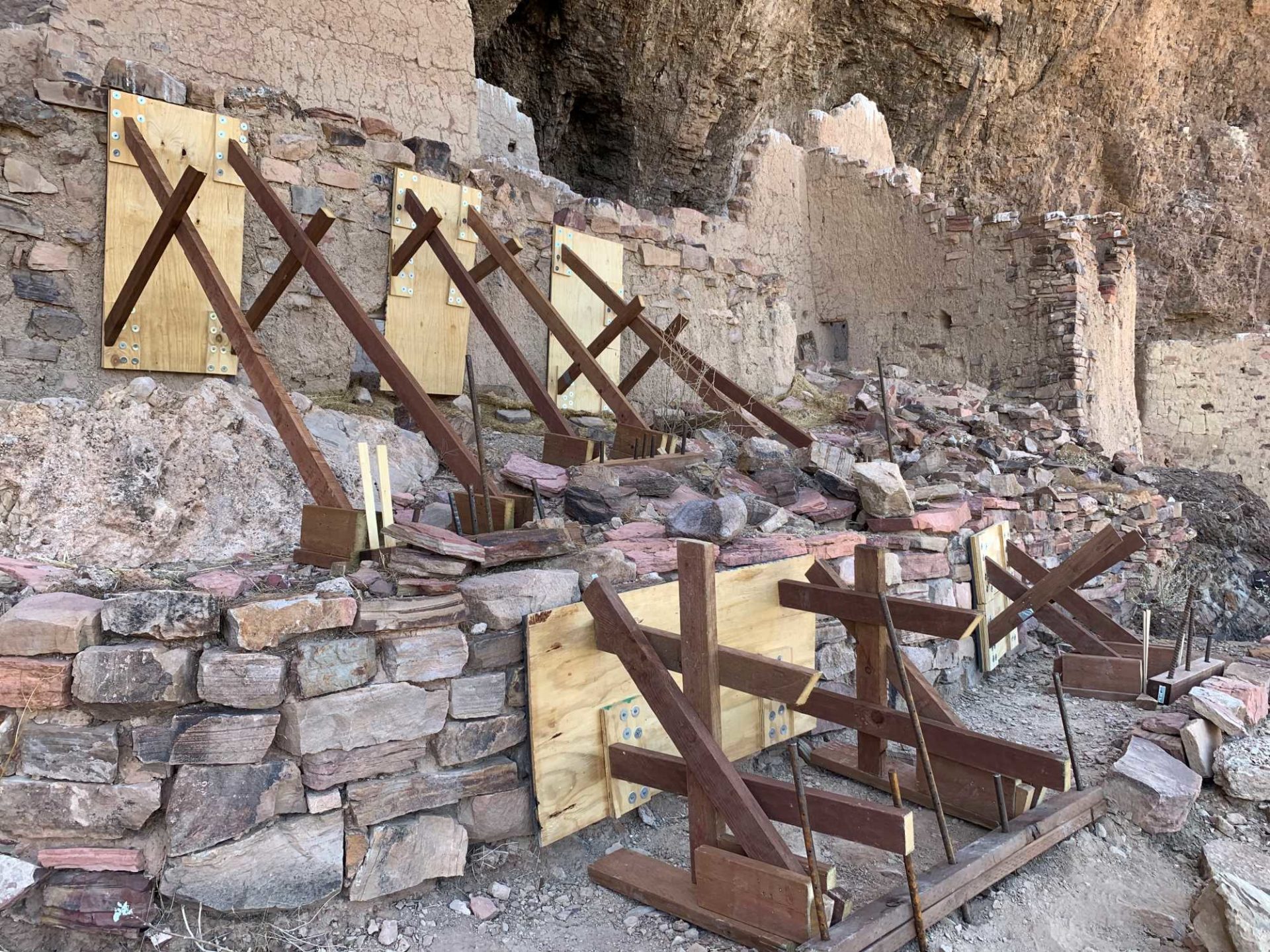
On the third day of work, we got our original mini-brace into position and then built and positioned a second mini-brace. Anyone who has heard that Arizona has a dry heat has never tried to work outside during the height of monsoon season—it was very hot and very humid! Thankfully, we were able to finish all the work on this day, and we even got back to the office to enjoy some frozen popsicles.
Our total work was three main braces with two mini-braces and three days of effort. With all those braces, we are confident that the collapsing wall, and the retaining wall, are not going anywhere anytime soon! Our braces—and the wall—have since held up to several intense storms, so now we can confidently say, “Don’t worry, she’ll hold together!”
2 thoughts on “Don’t Worry, She’ll Hold Together”
Comments are closed.
Explore the News
-
Join Today
Keep up with the latest discoveries in southwestern archaeology. Join today, and receive Archaeology Southwest Magazine, among other member benefits.
I’m wondering if this is a permanent solution or an interim one on the way to a more aesthetically pleasing permanent one, and if interim, what might the permanent solution look like?
Thanks,
The wooden braces are just a temporary solution, to give us the time to plan a permanent one. At the moment, we have no clue what a permanent solution may look like, it’s still in the early discussion phase. But a solution that is both aesthetically pleasing and structurally sound enough to last decades, if not centuries, is what we would try to aim for.